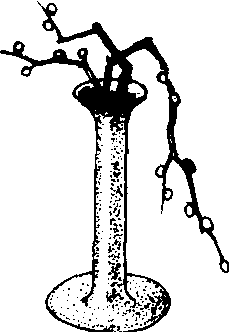悬崖式插花cascade style
又称下垂式插花。东方式插花的一种形式。主要花枝外倾而下悬,表现某些蔓性或半蔓性或易弯曲的柔韧花枝的修长飘逸、轻盈流畅的自然风姿,给人以潇洒、舒展、轻柔的美感。适宜于瓶式或盆式插花,仰视观赏,可摆放在橱柜、几架等较高的位置上。

悬崖式插花
| 词条 | 悬崖式插花 |
| 类别 | 中文百科知识 |
| 释义 | 悬崖式插花cascade style又称下垂式插花。东方式插花的一种形式。主要花枝外倾而下悬,表现某些蔓性或半蔓性或易弯曲的柔韧花枝的修长飘逸、轻盈流畅的自然风姿,给人以潇洒、舒展、轻柔的美感。适宜于瓶式或盆式插花,仰视观赏,可摆放在橱柜、几架等较高的位置上。
悬崖式插花 |
| 随便看 |
开放百科全书收录579518条英语、德语、日语等多语种百科知识,基本涵盖了大多数领域的百科知识,是一部内容自由、开放的电子版国际百科全书。